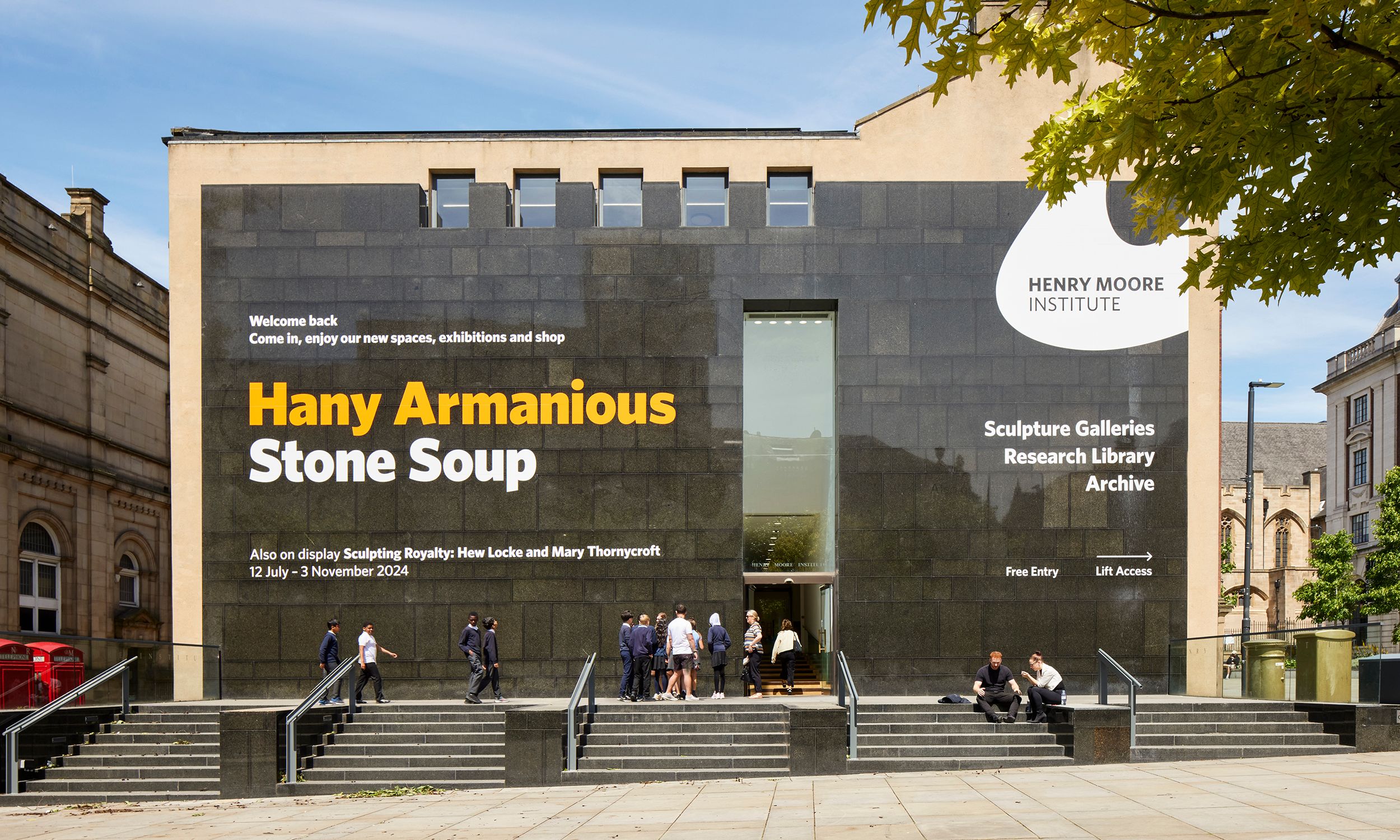The façade of the newly redeveloped Henry Moore Institute
Photo: Richard Chivers
The Henry Moore Institute in Leeds has opened its doors following the first major redevelopment in its 31-year history.
The institute, which is located next to Leeds Art Gallery, was founded as a result of the British sculptor's frustration that he did not have more access to sculpture as a young man. Moore was born in the nearby town of Castleford and studied at Leeds School of Art.
The organisation is primarily a research centre for sculpture and houses a library, an archive and multiple exhibition spaces. Together with Leeds Art Gallery, it looks after one of the greatest collections of British sculpture in the world, as well as personal objects belonging to leading artists—among them Lynn Chadwick's book collection and Jacob Epstein’s toolbox.
The renovation work, which the institute's director Laurence Sillars says cost more than £500,000, focused on modernising the community spaces. There is a bigger, more open reception and gift shop; a new learning and engagement facility on the first floor for workshops and other events; and a revamped lobby area in the library, with display cases featuring works from the collection.
The reception area of the Institute has been reimagined, with a “meeting point” and more welcoming shop
Photo: Richard Chivers
Furniture has been carefully repurposed throughout, with any additions selected to fit seamlessly with what came before. The roof has also been replaced, with solar panels installed to make the institute more sustainable and improve the building's carbon footprint.
New exhibitions have been put on to mark the occasion: one is a survey of work by the leading Australian sculptor Hany Armanious, and the other a display placing work by Hew Locke in dialogue with that of the 19th-century sculptor Mary Thornycroft. In November, the institute will open a group exhibition, The Traumatic Surreal, featuring work made since 1960 by women artists working in the Surrealist tradition.
Sillars explains that there was a need to “invest” in the institution’s audiences, after more than three decades of being open without any modifications. He hopes, too, that the creation of more welcoming, accessible spaces will inspire young visitors and create new ways in for them to engage with the arts.
Other new spaces include a multifunctional learning and
engagement facility
Photo: Richard Chivers
“I think just learning about those great specialisms that fill the world, and those potential paths is very important,” he says. “And through that there's an awareness at least of what research is, of what looking at real work or real archives is through a process of learning, and that that's something they could all do in the future.”
A challenging environment
The development at the Henry Moore Institute, which funds around 40% of its activities through the artist’s estate and the rest through fundraising, comes at a difficult time for the arts landscape in the UK. In recent years, cuts to arts budgets and a cost of living crisis has put institutions at risk, and made the study, experience and practice of art increasingly challenging.
Leeds is among the cities that has been affected: artists at Aire Street Workshops, a collaborative space in the city centre, are facing eviction in January 2025 as the council has said it does not have the budget for repairs. The Tetley, a popular contemporary art gallery housed in a former tea brewery on the city’s south bank, closed in December 2023 after its lease expired and is still searching for a permanent home, under a new name.
Sillars hopes the Henry Moore Institute’s project will provide much-needed spaces for creativity, and for creatives, in the city. “I think we're pretty frightened about the future and how difficult it is to be an artist now, and we want to [cater] to a much younger generation of people, those potential artists, and give them a dedicated space here,” he says.
He also explains there are broader plans in motion: the institute having just created an “options study” in collaboration with Leeds City Council, in the hope of creating a “solid architectural offer” that joins up the institute, the Leeds Art Gallery and the adjoining Central Library. “I think it could be £80m or something crazy,” Sillars says. “These are really difficult times, but I believe it will happen.”
Leeds City Council have been contacted for comment.

